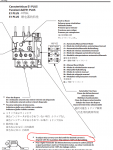Lucas Organ
Member
- Location
- NL CANADA
- Occupation
- Industrial Electrician
If I have a motor overload relay sat at 25A and I exceed this by say even just one amp, how long should my OL relay read this current before it trips?
Thank you all in advance
Thank you all in advance

